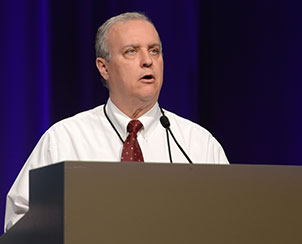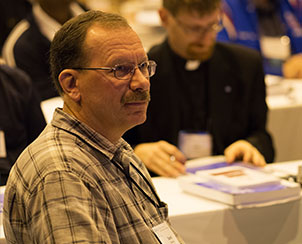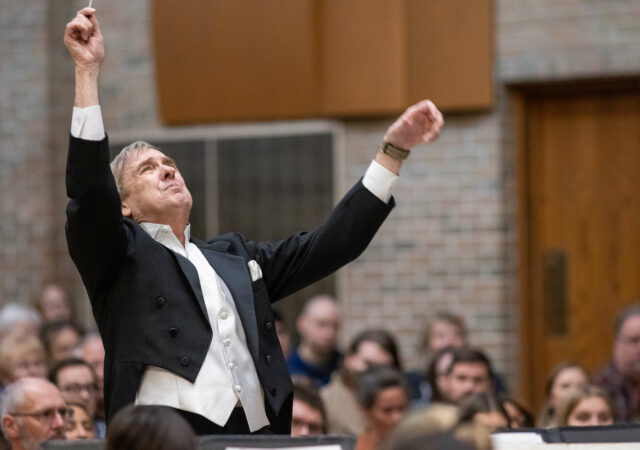by Katie Schuermann
ST. LOUIS (July 23, 2013) — It was a morning of good housekeeping for Floor Committee 7 on Structure and Ecclesiastical Matters. Delegates passed eight of the nine resolutions put into motion by the committee, five without any discussion from the floor.

Resolution 7-13 dealt primarily with amendment solutions concerning Bylaws related to governing district operations and passed with a 91.8 percent majority — 887 voting yes and 79 voting no.
After the Rev. David W. Totsky, secretary of the South Wisconsin District, completed his 8-minute reading of the committee’s proposed amendments to Bylaws governing district operations as stated in Resolution 7-13, Synod President Rev. Dr. Matthew C. Harrison thanked him for reading the Bylaws in such a “sonorous, calm” voice and joked, “I may ask CPH to publish them in audio version to help me go to sleep every night.”
Resolution 7-05 encouraged “circuits, districts, the Synod, and Synod agencies” to consider using e-meeting technology and passed with a 90.1 percent majority — 874 voting yes and 96 voting no.
Resolution 7-15, easily passed by a vocal majority vote, proposed that ongoing district membership and ecclesiastical supervision issues regarding international congregations and church workers living outside of the United States “be referred to the Board of International Mission, in consultation and concurrence with the Council of Presidents and the Office of the President, for appropriate interim action and recommendations for bylaw revisions to the 66th Regular Convention of The Lutheran Church—Missouri Synod.”

Resolution 7-18 requested that the Council of Presidents, the Commission on Constitutional Matters (CCM) and the Secretary of the Synod study the matter of doctrinal training for reconcilers and make recommendations. It passed with a 98.5 percent majority — 668 voting yes and 10 voting no.
Resolution 7-16 proposed that each district board of directors “have the authority to choose to appoint up to three (3) voting lay members, from the district’s congregations, to the board to obtain additional skill sets.” It passed with a 92.8 percent majority — 684 voting yes and 53 voting no.
Resolution 7-14 dealt with “concerns related to bylaws governing the Synod’s conventions,” specifically regarding convention nominations, staggering terms for members of certain boards and commissions, convention expenses and attendance of appointed officers and advisory representatives to conventions of the Synod. It passed with a 96.8 percent majority — 731 voting yes and 24 voting no.
Resolution 7-11 underscored the importance of honoring “all time requirements provided by bylaw in the Synod’s expulsion processes.” It passed with a 95.3 percent majority — 770 voting yes and 38 voting no.
Resolution 7-09A sought to correct the “lack of clarity and even contradictions in the Handbook of the Synod” that resulted from the restructuring decisions made during the 2010 LCMS convention. It passed with a 97.3 percent majority — 826 voting yes and 23 voting no.
Resolution 7-10 proposed the Synod adopt a 4-year convention cycle, but it was referred back to the committee for further consultation with the CCM on specific wording, with the expectation that the resolution be reintroduced for discussion when next Committee 7 has the floor.
The 65th Regular Convention of the LCMS is meeting July 20-25 at the America’s Center Convention Complex under the theme “Baptized for This Moment.” Among convention participants are some 1,200 clergy and lay voting delegates.




